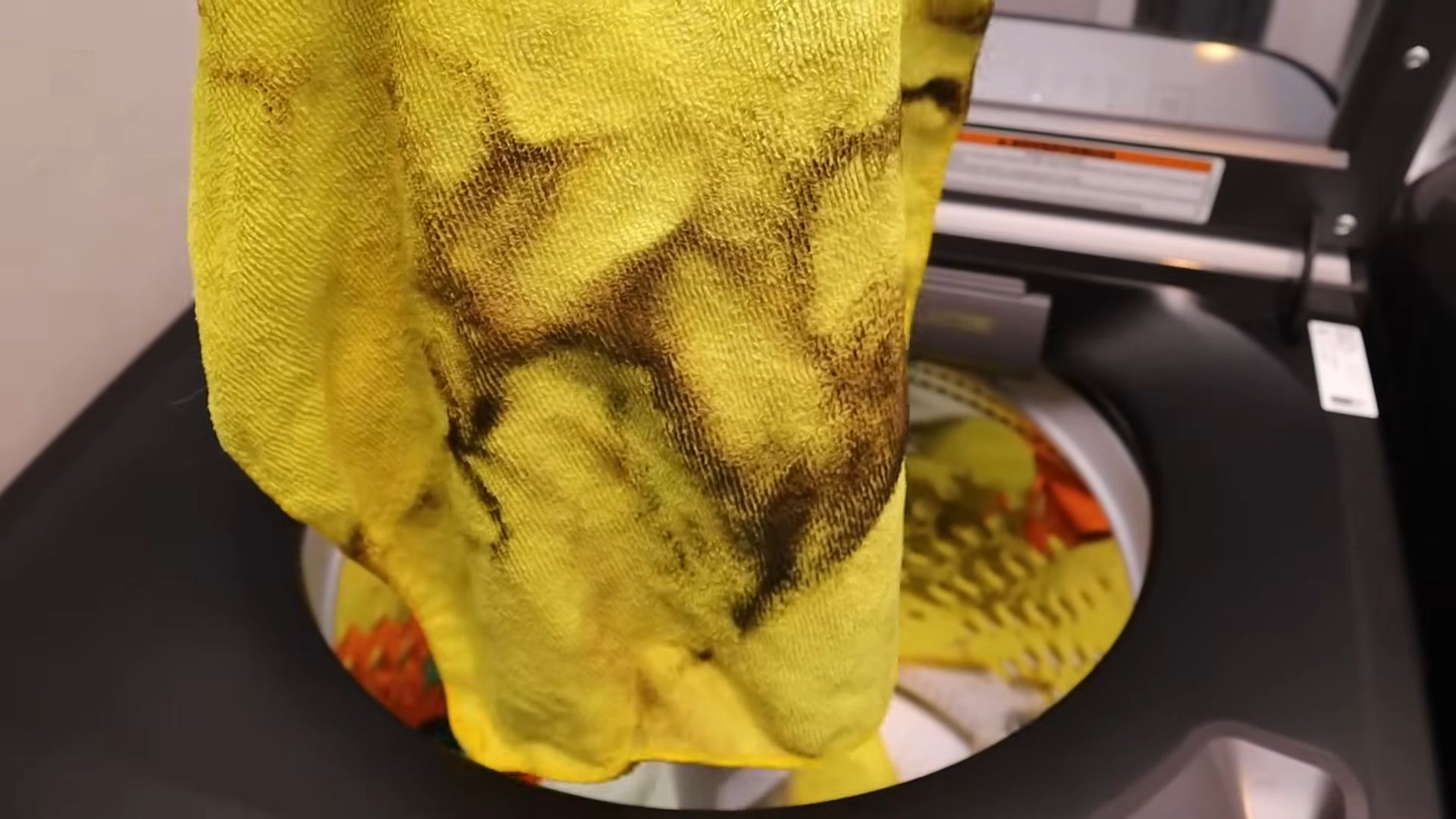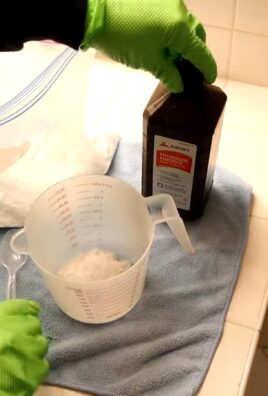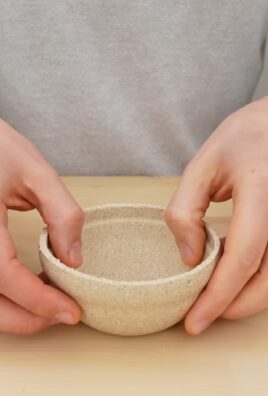Washing microfiber cloths might seem straightforward, but trust me, there’s a right way and a wrong way to do it! I’ve ruined my fair share of these handy little helpers by tossing them in with the wrong laundry, and I’m here to make sure you don’t make the same mistakes.
Microfiber cloths have become indispensable in our cleaning routines, and for good reason. Their super-absorbent and lint-free qualities make them perfect for everything from dusting furniture to detailing cars. But did you know that the technology behind microfiber actually dates back to the late 1950s in Japan? Initially developed for industrial uses, it wasn’t until the 1990s that microfiber cloths became widely available for household cleaning. Now, they’re a staple in homes around the world!
So, why is it so important to learn the proper techniques for washing microfiber cloths? Well, improper care can significantly reduce their effectiveness and lifespan. Think about it: you’re relying on these cloths to pick up dirt, grease, and grime. If you’re not cleaning them correctly, you’re essentially just spreading that mess around. Plus, nobody wants to keep buying new cloths when they could easily extend the life of the ones they already have. In this article, I’m going to share my tried-and-true DIY tricks and hacks for keeping your microfiber cloths clean, effective, and ready for any cleaning challenge. Let’s get started!

How to Keep Your Microfiber Cloths Like New: A DIY Washing Guide
Microfiber cloths are amazing! They’re super absorbent, gentle on surfaces, and perfect for everything from dusting to detailing your car. But, if you’re like me, you’ve probably noticed they can get a little… funky after a while. They lose their absorbency, get stiff, and sometimes even start to smell. Don’t worry, though! You don’t have to throw them away. With the right washing techniques, you can keep your microfiber cloths in tip-top shape for ages. I’m going to walk you through my tried-and-true method for washing microfiber cloths, ensuring they stay soft, absorbent, and ready for any cleaning task.
Understanding Microfiber: Why Special Care is Needed
Before we dive into the washing process, let’s quickly understand why microfiber cloths need special attention. Microfibers are incredibly tiny synthetic fibers, much thinner than a human hair. This gives them a huge surface area, allowing them to trap dirt, dust, and grime effectively. However, this also means they easily attract and hold onto oils, waxes, and other substances that can clog the fibers and reduce their effectiveness.
That’s why regular detergents and fabric softeners are a big no-no. They can leave residue behind, coating the fibers and making them less absorbent. So, we need a gentle, residue-free approach.
Supplies You’ll Need
Here’s what you’ll need to get started:
* **Microfiber Detergent:** This is key! Look for detergents specifically designed for microfiber cloths. They’re formulated to remove dirt and grime without leaving residue. I personally love using a dedicated microfiber detergent, but a clear, dye-free, and fragrance-free laundry detergent can also work in a pinch.
* **Laundry Detergent (Alternative):** If you can’t find a microfiber-specific detergent, a very mild, clear, dye-free, and fragrance-free laundry detergent will do. Use it sparingly!
* **Baking Soda (Optional):** For heavily soiled cloths, baking soda can help neutralize odors and loosen stubborn dirt.
* **White Vinegar (Optional):** Vinegar can help remove detergent residue and soften the cloths. Use it in the rinse cycle only!
* **Laundry Mesh Bags (Recommended):** These protect your cloths from snagging or getting damaged in the washing machine.
* **Washing Machine:** Obviously!
* **Clothes Dryer (Optional):** You can air dry or tumble dry on low heat.
Pre-Washing Prep: Getting Ready to Clean
This step is crucial, especially if your cloths are heavily soiled.
1. **Sort Your Cloths:** Separate your microfiber cloths based on their use. Keep cloths used for different tasks separate (e.g., car detailing cloths should be washed separately from household cleaning cloths). This prevents cross-contamination. I always keep my car detailing cloths separate because they often have waxes and polishes on them.
2. **Remove Loose Debris:** Shake out your cloths to remove any loose dirt, dust, or debris. You can even use a vacuum cleaner with a brush attachment to remove stubborn particles.
3. **Pre-Treat Stains (If Necessary):** If you have any heavily stained cloths, pre-treat them with a small amount of microfiber detergent or a stain remover specifically designed for delicate fabrics. Gently rub the detergent into the stain and let it sit for about 15-30 minutes before washing.
Washing Your Microfiber Cloths: The Step-by-Step Guide
Now for the main event! Follow these steps for a thorough and effective cleaning:
1. **Load the Washing Machine:** Place your microfiber cloths into laundry mesh bags. This will protect them from damage during the wash cycle. Don’t overload the washing machine; the cloths need room to move freely for proper cleaning. I usually wash about 10-15 cloths per load.
2. **Add Detergent:** Add the appropriate amount of microfiber detergent to the washing machine’s dispenser. Follow the manufacturer’s instructions on the detergent bottle. If you’re using a regular detergent, use only a very small amount – about half of what you would normally use for a regular load of laundry. Remember, less is more!
3. **Add Baking Soda (Optional):** If your cloths are particularly dirty or smelly, add about 1/2 cup of baking soda to the washing machine drum along with the detergent.
4. **Select the Wash Cycle:** Choose a gentle or delicate wash cycle with cold or warm water. Hot water can damage the fibers and cause them to shrink. I always use the cold water setting to be on the safe side.
5. **Start the Wash Cycle:** Start the washing machine and let it run its course.
6. **Add Vinegar to the Rinse Cycle (Optional):** Once the wash cycle is complete and the machine is about to start the rinse cycle, pause the machine and add 1/2 cup of white vinegar to the fabric softener dispenser (or directly into the drum if your machine doesn’t have a dispenser). Vinegar helps remove any remaining detergent residue and softens the cloths.
7. **Run the Rinse Cycle:** Let the rinse cycle complete.
8. **Check for Residue:** After the wash cycle is finished, check your cloths for any remaining detergent residue. If they feel slippery or soapy, run an extra rinse cycle with cold water.
Drying Your Microfiber Cloths: The Final Touch
Proper drying is just as important as proper washing.
1. **Air Drying (Recommended):** The best way to dry microfiber cloths is to air dry them. Hang them on a clothesline or drying rack, away from direct sunlight. This prevents them from shrinking or getting damaged by the heat.
2. **Tumble Drying (Optional):** If you prefer to use a dryer, tumble dry on low heat only. High heat can melt the fibers and make the cloths stiff and less absorbent.
3. **Avoid Dryer Sheets:** Dryer sheets contain chemicals that can coat the fibers and reduce their effectiveness. Skip them altogether!
4. **Check for Lint:** After drying, check your cloths for any lint. If they have picked up lint from the dryer, use a lint roller to remove it.
Extra Tips for Keeping Your Microfiber Cloths in Top Condition
Here are a few extra tips I’ve learned over the years:
* **Wash Frequently:** Don’t wait until your cloths are completely filthy to wash them. Wash them after each use, or at least every few uses, to prevent dirt and grime from building up.
* **Store Properly:** Store your clean microfiber cloths in a clean, dry place, away from dust and dirt. I like to keep mine in a sealed container to keep them fresh.
* **Replace When Necessary:** Even with the best care, microfiber cloths will eventually wear out. If your cloths start to lose their absorbency or become damaged, it’s time to replace them.
* **Avoid Fabric Softener:** I can’t stress this enough! Fabric softener is the enemy of microfiber cloths. It will leave a residue that coats the fibers and makes them less absorbent.
* **Don’t Iron:** Ironing microfiber cloths can melt the fibers and damage them.
Dealing with Specific Types of Soiling
Sometimes, your microfiber cloths might be exposed to specific types of soiling that require a little extra attention. Here’s how I handle a few common scenarios:
* **Grease and Oil:** For cloths used to clean up grease or oil, I pre-treat them with a degreasing dish soap before washing. I rub a small amount of dish soap into the affected area and let it sit for about 30 minutes before washing as usual.
* **Wax and Polish:** If you’ve used your cloths for waxing or polishing, you might need to wash them several times to remove all the residue. I often use a dedicated wax and polish remover for microfiber cloths before washing.
* **Pet Hair:** Microfiber cloths are great for picking up pet hair, but they can also hold onto it tightly. Before washing, I use a lint roller or a rubber glove to remove as much pet hair as possible.
Troubleshooting Common Problems
Even with the best intentions, you might encounter a few problems when washing your microfiber cloths. Here are some common issues and how to fix them:
* **Cloths are Still Stiff:** If your cloths are still stiff after washing, it’s likely due to detergent residue. Try running an extra rinse cycle with white vinegar.
* **Cloths are Not Absorbent:** If your cloths have lost their absorbency, it could be due to fabric softener residue or clogged fibers. Try washing them with a microfiber detergent and adding vinegar to the rinse cycle.
* **Cloths Smell Bad:** If your cloths smell bad, it could be due to bacteria growth. Try washing them with baking soda and vinegar. You can also soak them in a solution of water and bleach (use a very diluted solution and rinse thoroughly) before washing.
By following these tips and tricks, you can keep your microfiber cloths clean, absorbent, and ready for any cleaning task. Happy cleaning!

Conclusion
So, there you have it! Mastering the art of washing microfiber cloths doesn’t have to be a daunting task. By following these simple yet effective steps, you can ensure your cloths remain in tip-top shape, ready to tackle any cleaning challenge you throw their way. We’ve debunked the myths, highlighted the crucial dos and don’ts, and provided you with a clear roadmap to microfiber cloth longevity.
Why is this DIY trick a must-try? Because it’s not just about saving money (although that’s a definite perk!). It’s about maximizing the effectiveness of your cleaning tools. Properly cared for microfiber cloths trap more dirt, dust, and grime, leaving surfaces cleaner and healthier. Think of it as an investment in a cleaner home and a more sustainable cleaning routine. You’ll be reducing waste by extending the life of your cloths and minimizing the need for disposable alternatives.
But don’t stop there! Feel free to experiment with variations to find what works best for you. For instance, if you’re dealing with heavily soiled cloths, consider adding a pre-soak in a solution of warm water and a mild detergent before washing. For an extra boost of freshness, a few drops of essential oil (like lavender or tea tree) can be added to the rinse cycle – just be sure they are compatible with your detergent and washing machine. Another variation is to use a mesh laundry bag to protect your microfiber cloths from snagging or damage during the wash cycle, especially if you’re washing them with other items.
Ultimately, the key to successful washing microfiber cloths lies in understanding their unique properties and treating them with the care they deserve. So, ditch the harsh chemicals, embrace the gentle cycle, and watch your microfiber cloths transform into cleaning powerhouses.
We wholeheartedly encourage you to give this DIY trick a try. It’s easy, effective, and environmentally friendly. And most importantly, we want to hear about your experience! Share your tips, tricks, and any variations you discover in the comments below. Let’s build a community of microfiber cloth cleaning experts and help each other achieve sparkling clean results! Your insights could be invaluable to others just starting their journey to properly caring for their microfiber cloths. Let us know if you found this guide helpful and if you have any other cleaning dilemmas you’d like us to tackle. Happy cleaning!
Frequently Asked Questions (FAQ)
What happens if I wash my microfiber cloths with regular cotton towels?
Washing microfiber cloths with regular cotton towels is generally not recommended. Cotton towels tend to shed lint, which can become trapped in the tightly woven fibers of the microfiber cloths. This lint can significantly reduce the effectiveness of the microfiber, making it less absorbent and less effective at picking up dirt and dust. It’s best to wash microfiber cloths separately or with other lint-free items. If you absolutely must wash them together, consider using a lint roller on the microfiber cloths after washing to remove any stray fibers.
Can I use fabric softener when washing microfiber cloths?
No, absolutely avoid using fabric softener when washing microfiber cloths. Fabric softener contains oils and waxes that coat the fibers of the cloth, reducing their absorbency and effectiveness. The coating prevents the microfiber from properly grabbing and trapping dirt, dust, and liquids. This is one of the most common mistakes people make when caring for their microfiber cloths. If you want to soften your cloths, try adding a cup of white vinegar to the rinse cycle instead. Vinegar acts as a natural fabric softener and helps to remove any detergent residue.
What temperature should I use to wash microfiber cloths?
It’s best to wash microfiber cloths in warm or hot water. Hot water helps to loosen and remove dirt, grease, and grime that may be trapped in the fibers. However, avoid using excessively hot water, as it can damage the fibers over time. A temperature of around 140°F (60°C) is generally considered safe and effective. Always check the care label on your specific microfiber cloths for any specific temperature recommendations.
How often should I wash my microfiber cloths?
The frequency of washing your microfiber cloths depends on how often you use them and what you use them for. For cloths used for light cleaning, such as dusting or wiping down surfaces, washing them after each use is not always necessary. However, for cloths used for heavier cleaning tasks, such as cleaning bathrooms or kitchens, washing them after each use is highly recommended to prevent the spread of bacteria and grime. A good rule of thumb is to wash your microfiber cloths whenever they start to feel dirty or lose their absorbency.
Can I dry my microfiber cloths in the dryer?
Yes, you can dry your microfiber cloths in the dryer, but it’s important to use a low heat setting. High heat can damage the fibers and reduce their effectiveness. It’s also best to avoid using dryer sheets, as they can leave a residue on the cloths that reduces their absorbency. Alternatively, you can air dry your microfiber cloths. Air drying is a gentle and effective way to dry your cloths without exposing them to heat.
What type of detergent should I use to wash microfiber cloths?
Use a mild, liquid detergent that is free of dyes, perfumes, and bleach. Harsh chemicals can damage the fibers of the microfiber cloths and reduce their effectiveness. Powdered detergents can also leave a residue on the cloths, so liquid detergents are generally preferred. Look for detergents specifically designed for delicate fabrics or those labeled as “free and clear.”
How do I remove stubborn stains from my microfiber cloths?
For stubborn stains, try pre-treating the cloths with a stain remover before washing. You can also soak the cloths in a solution of warm water and a mild detergent for a few hours before washing. For grease stains, try using a degreasing dish soap. For other types of stains, you can try using a mixture of baking soda and water. Apply the mixture to the stain, let it sit for a few minutes, and then wash the cloth as usual.
Can I use bleach to wash my microfiber cloths?
No, avoid using bleach when washing microfiber cloths. Bleach can damage the fibers and reduce their absorbency. It can also cause the cloths to fade or discolor. If you need to disinfect your microfiber cloths, try using a solution of white vinegar and water instead. Vinegar is a natural disinfectant and can help to kill bacteria and germs.
How do I store my microfiber cloths?
Store your microfiber cloths in a clean, dry place. Avoid storing them in damp or humid environments, as this can promote the growth of mold and mildew. You can store them in a drawer, a cabinet, or a storage container. It’s also a good idea to keep your clean microfiber cloths separate from your dirty ones to prevent cross-contamination.
My microfiber cloths are leaving streaks. What am I doing wrong?
Streaking can occur for several reasons. First, ensure you’re not using too much cleaning solution. A little goes a long way with microfiber. Second, make sure your cloths are clean. Dirty cloths will simply spread dirt around. Third, the surface you’re cleaning might have a residue buildup. Try cleaning the surface with a different cleaner or a solution of vinegar and water. Finally, ensure you’re using the correct type of microfiber cloth for the task. Some are better suited for polishing than others.





Leave a Comment